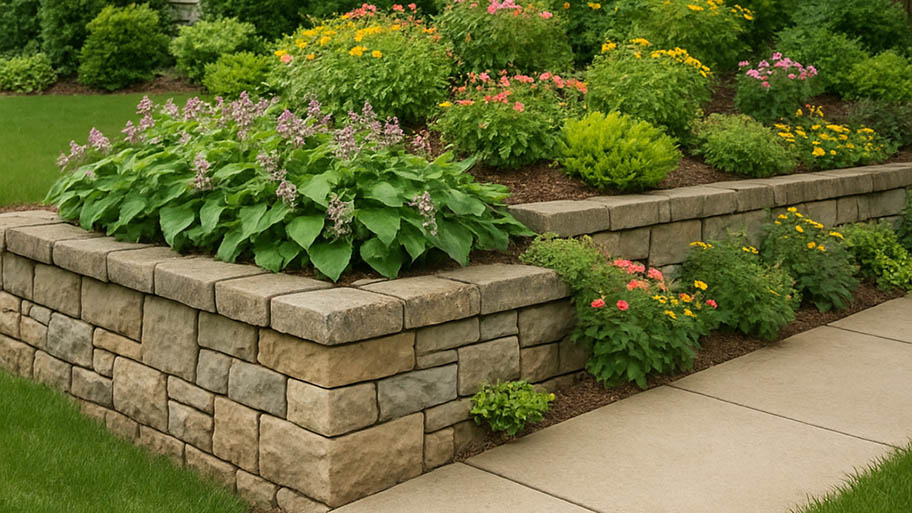
Looking to step up your golf game without leaving your property? This guide details backyard putting green costs to help you decide if this project is worth it.
Keep your roses blooming with regular pruning


While trimming your roses may seem counterintuitive to encourage the plants to grow more, it’s important to prune your rose bushes at least once a year. Learning how to trim a rose bush helps the plant thrive by removing dead or diseased branches and making room for new growth. Trim a rose bush like a pro to promote optimal blooms next season by following these seven steps.
Before you reach for your pruning shears, stop to consider the best trimming method for your rose bushes. The best time to prune depends on the type of roses you have. Here are a few guidelines to know when to prune roses in your garden:
Shrub rose: Prune in late winter to early spring, just before the new buds begin popping up.
Wild roses, old garden roses, and climbing roses: Prune after the last blooms have died away for the season.
Trimming dead or diseased portions of your rose bushes can be done as needed. You can also remove spent blooms throughout the blooming season to encourage more growth and provide additional care for your rose bushes. However, it’s best to stop pruning about two months before your area’s first frost date when the plant starts going dormant.

Rose thorns are not fun to deal with, so wearing a long pair of gardening gloves is essential to keep your hands cut-free. Many home improvement or gardening shops carry rose gloves made for pruning roses that will protect you from those tricky rose thorns.
Clear away any loose debris and leaves from your rose bushes. This step helps you clearly see the rose bush branches and flowers so you don’t over or undercut.

Branches and canes that are black, reddish-black, splotchy, or have little trace of green are likely dead or diseased. If you spot any dead or diseased wood, look down the stem until you find the area where the wood becomes healthy and green. Then, cut the branch at a 45-degree angle. You should see white flesh at the center; if not, continue making cuts until you do.

Trim any twiggy branches thinner than a pencil, still cutting at a 45-degree angle. Be careful not to cut into the base of the rose bush, as this could leave an open wound and invite disease.

Next, take your loppers and cut back on any overly thick areas. Make a few small cuts, assess, and repeat to prevent over-trimming the bush.

Cut back the remaining canes to stimulate new growth. Find the nearest bud eye (a raised bump on the stem where a leaf would normally grow). Cut a quarter inch above the bud eye at a 45-degree angle that slopes away from the bud.
Pruning compound is optional for this process, but it can help your roses stay healthy. Spread a light layer of pruning compound on any fresh cuts. This material helps protect your roses from rot, pests, and disease.
While trimming rose bushes is an affordable project to do yourself, sometimes it may be easier to let a local landscaping pro take care of it. If your roses look seriously diseased, a professional can help treat the plants and prevent it from spreading to nearby plants or shrubbery. The average cost of trimming a large series of bushes is $850, but it typically costs $100 per bush. When hiring a landscaping pro to trim your rose bushes, be sure to specify the type and size to ensure your landscaper has the right skills, equipment, and experience to tackle the job.
From average costs to expert advice, get all the answers you need to get your job done.

Looking to step up your golf game without leaving your property? This guide details backyard putting green costs to help you decide if this project is worth it.

We break down the cost to remove bamboo, which is slightly higher than other forms of tree removal. It's a difficult DIY task because of bamboo's hardy underground roots.

Leveling your yard can help with drainage and prevent damage to your home. Learn the cost to level a yard in Columbus, OH, and what factors can affect the price.

There is no one-size-fits-all retaining wall for your yard. In fact, the options are endless. Check out 20 retaining wall ideas to upgrade your hardscape.

Nothing spruces up your home’s exterior quite like refreshing flower beds and walkways with landscaping materials. Learn what questions to ask about mulch before ordering.

DIYing thorn bush removal is possible. This guide offers a list of necessary materials and a step-by-step walkthrough to help you remove thorn bushes.